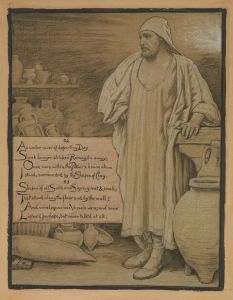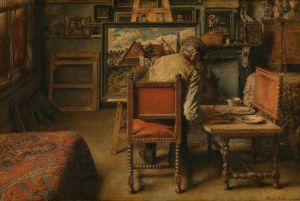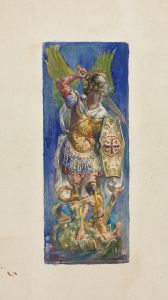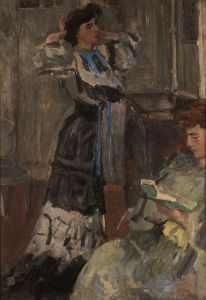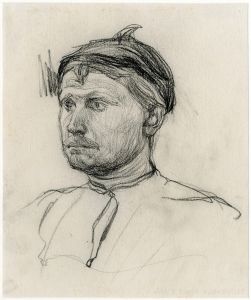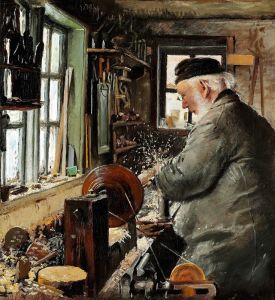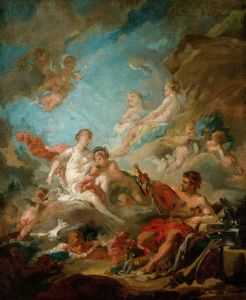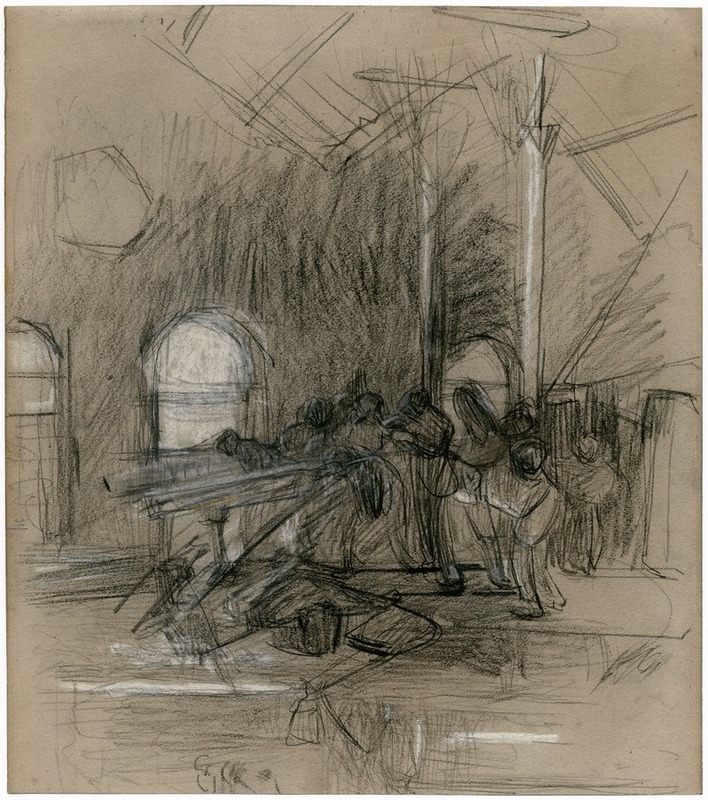
Interieur van een glasblazerij
A hand-painted replica of Isaac Israëls’s masterpiece Interieur van een glasblazerij, meticulously crafted by professional artists to capture the true essence of the original. Each piece is created with museum-quality canvas and rare mineral pigments, carefully painted by experienced artists with delicate brushstrokes and rich, layered colors to perfectly recreate the texture of the original artwork. Unlike machine-printed reproductions, this hand-painted version brings the painting to life, infused with the artist’s emotions and skill in every stroke. Whether for personal collection or home decoration, it instantly elevates the artistic atmosphere of any space.
Isaac Israëls was a prominent Dutch painter associated with the Amsterdam Impressionism movement, known for his vibrant depictions of urban life and dynamic compositions. One of his notable works is "Interieur van een glasblazerij" (Interior of a Glassblowing Workshop), which exemplifies his keen interest in capturing the essence of everyday scenes with a lively and spontaneous brushwork.
"Interieur van een glasblazerij" portrays the interior of a glassblowing workshop, a subject that offers a glimpse into the industrial and artisanal practices of the time. The painting is characterized by Israëls' typical impressionistic style, where he employs loose brushstrokes and a vivid palette to convey the atmosphere and energy of the scene. The composition likely includes figures engaged in the process of glassblowing, surrounded by the tools and materials of their trade, although specific details about the painting's composition are not extensively documented.
Isaac Israëls, born in 1865 in Amsterdam, was the son of the renowned painter Jozef Israëls. He was exposed to art from an early age and developed his skills under the influence of his father and the artistic environment of the time. Israëls became associated with the Tachtigers, a group of artists and writers who sought to bring modernity and innovation to Dutch art and literature. His work is often compared to that of his contemporaries, such as George Hendrik Breitner, with whom he shared a fascination for capturing the vibrancy of city life.
Throughout his career, Israëls traveled extensively, drawing inspiration from various cultures and environments. His travels took him to cities like Paris, London, and later to the Dutch East Indies, where he continued to explore different themes and subjects. Despite these travels, his work remained deeply rooted in the Impressionist tradition, focusing on light, movement, and the immediacy of the moment.
"Interieur van een glasblazerij" fits within Israëls' broader oeuvre, which often depicted scenes of labor and leisure, highlighting the contrasts and interactions between different social classes. His ability to capture the nuances of human activity and the subtleties of light and shadow made his work stand out in the Dutch art scene of the late 19th and early 20th centuries.
While specific details about the provenance and current location of "Interieur van een glasblazerij" are not widely available, Israëls' work is held in high regard and can be found in major museums and private collections around the world. His paintings continue to be celebrated for their dynamic compositions and the way they encapsulate the spirit of the times.
Isaac Israëls passed away in 1934, leaving behind a legacy that has influenced generations of artists. His contributions to the Impressionist movement and his ability to capture the essence of everyday life ensure that his work remains relevant and appreciated to this day.





